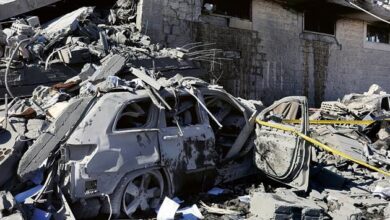People were sobbing and shouting during these horrifying moments when the plane’s engine caught fire in flight
NEW DELHI: Shortly after takeoff, one of the aircraft’s engines caught fire, causing terrifying moments for passengers on a United Airlines flight. After the concerning finding, United Flight 1677, which had taken off from Houston and was carrying 179 passengers and 8 crew members on its way to Amsterdam, was forced to make an emergency landing back at the Houston airport.

According to a CNN story, passengers’ firsthand testimonies described a chaotic scene, with many expressing anxiety and worry. One of the passengers said, “People were screaming and crying,” summarizing the utter terror that descended over the passengers upon seeing flames devour one of the engines.
The flight crew and pilots responded quickly to the emergency situation, successfully navigating the aircraft back to the airport and guaranteeing the safety of all passengers and crew members on board. Since then, the event has prompted inquiries to ascertain the origin of the engine fire and assess the airline’s emergency reaction.
Concerns about aviation safety and the procedures in place to stop such incidents from happening in the future have been brought up by this incident. Many are advocating for stricter inspections and enhanced safety procedures while the investigations go on in order to guarantee the safety of both passengers and flight crew.
What are the procedures for handling an aircraft engine fire safely?
To protect the crew and passengers in the event of an engine fire in an aircraft, safety procedures are carefully thought out and adhered to. The general stages involved are as follows:
Detection: When an engine fire is suspected, aircraft having engine fire detection systems are able to notify the cockpit crew.
Confirmation: If at all feasible, the flight crew uses a variety of equipment and visual inspections to confirm the fire alert.
crew Alertness: In the event of an emergency, the pilot in charge will notify the passengers and cabin staff and get them ready for any required emergency measures.
Engine Shutdown: The impacted engine is quickly shut down by shutting the fuel cutoff valve in order to stop the fire from receiving further gasoline.
Fire Suppression: To put out the fire, the pilot engages the fire suppression system, which injects fire-extinguishing chemicals into the engine.
Diversion or Emergency Landing: In the event of an emergency landing, the flight crew will locate the closest appropriate airport. Landing as soon and securely as possible is given priority.
Passenger Safety Measures: Cabin staff members teach passengers how to position themselves for braces during an emergency landing and make sure that all safety protocols are followed.
Evacuation (if required): If the fire persists or there is an imminent danger to the safety of the passengers, an evacuation may be requested after the aircraft has landed, utilizing slides or exits as necessary.
Emergency Services: When an aircraft arrives, airport emergency services are notified and ready to help with passenger evacuation and firefighting.
Reporting and Investigation: In order to ascertain the origin of the fire and enhance next safety precautions, an investigation will be carried out after the event.
These procedures are a component of extensive emergency protocols that flight and cabin crew are routinely taught to address a variety of in-flight crises, including engine fires.







